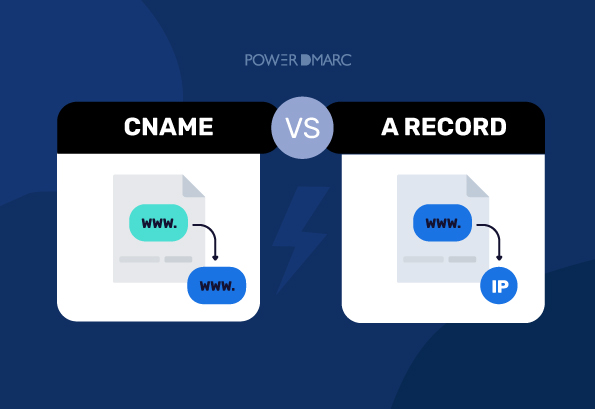DNS or Domain Name System links our web servers to websites. It’s similar to a phonebook used by servers to direct you to the website they want to reach. The concept of DNS revolves around different types of records. This blog will focus on CNAME vs A record.
What is a DNS Record?
DNS was created to let you access websites by entering domain names instead of IP addresses. It’s practically impossible to memorize or keep track of the IP addresses of so many websites.
DNS record lives on your domain’s authoritative server and behaves as the key to the functioning of your domain and website. It carries information regarding how your domain manages various requests, IP addresses linked to it, etc. There are several DNS record types, and their utility varies from extremely important to being just useful.
Two common DNS record types are CNAME and A records. A record is categorized as a crucial DNS record, while CNAME isn’t necessary as per theory, it’s perceived to be important in practice. You should apply it if you want your website to be highly accessible.
What is a CNAME Record?
Before jumping onto learning about the CNAME vs A record differences, let’s briefly understand the purpose of each of them.
A DNS CNAME record provides an association for alias domains and subdomains to the main parent domain. Here C stands for ‘canonical.’ This refers to the connection of subdomains to the canonical name domain or the records delivered for another DNS hostname.
Note that a CNAME record establishes a link between a subdomain and a parent domain as well. So, it may not always result in the same page loading when you type a domain name. You’re still required to create CNAME records that connect these subdomains to the parent domain.
This doesn’t mean that if you try to access a subdomain of a domain, you’ll be taken to the home page (which is the same page as the parent domain). Instead, you’re redirected to the appropriate files of the respective domain. These could be a blog page, product page, about-us page, etc.
CNAME records are helpful when the webmaster alters the IP address of the website. So, instead of changing A records for all the subdomains, you only have to change the A record for the parent website.
You can check your CNAME records using a CNAME record lookup tool.
What is an A Record?
The purpose of DNS A record is to help you land the desired website without entering the IP address. It contains records of IP addresses corresponding to particular websites; thus, A stands for ‘address.’ Without an A record, you won’t be able to reach a website through its domain name.
Whenever you type any domain name into your browser’s address bar, the responsible server returns the IP address for the domain, which is located in the zone files. This lets you navigate a website.
For instance, you can enter the domain name ‘powerdmarc’ into your browser’s address bar, and the DNS A record digs out the IP address.
Note that A records only work with IPv4 addresses and not IPv6. You would require an AAAA record for IPv6.
You can check your A records using an A record lookup tool.
Difference Between a DNS A Record and CNAME Record
To understand A record vs CNAME in detail, let’s consider the following example.
| Hostname/ Domain/ Subdomain | DNS Record Type | Destination |
| example.com | A record | 12.345.67.89 |
| www.example.com | CNAME record | example.com |
| blog.example.com | CNAME record | example.com |
| shop.example.com | CNAME record | shop.work.com |
As you’ll notice that between CNAME vs A record subdomain, an A record’s purpose is to link the parent domain or hostname with the correct IP address. On the other hand, CNAME records link domain aliases (www) and subdomains (mail) to the main domain listed in the A record. The ‘shop’ domain redirects to the ‘work’ server to manage which IP address the products are hosted on.
Another major difference between CNAME vs A record is that while A records connect websites to IP addresses, CNAME records connect subdomains and aliases to another domain record rather than its IP address.
Note that you must target all the CNAME records to the parent domain and not other aliases linked to the parent domain. This adds up to an extra step in the DNS lookup process. It results in extra time consumption and unnecessary complications.
- Can Blockchain Help Improve Email Security? - May 9, 2024
- Datacenter Proxies: Unveiling the Workhorse of the Proxy World - May 7, 2024
- Kimsuky Exploits DMARC “None” Policies in Recent Phishing Attacks - May 6, 2024
